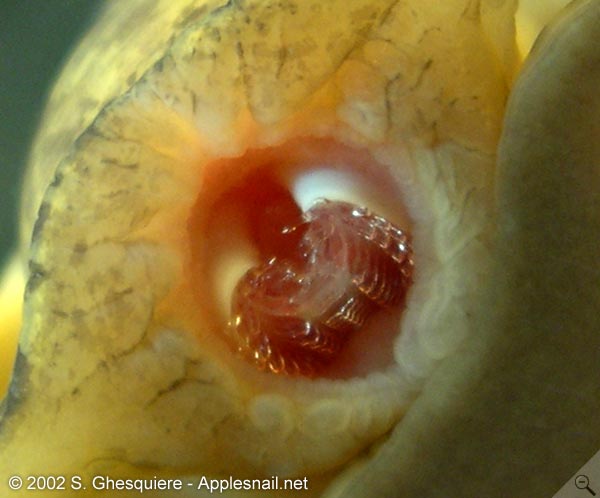
Nutrition
Obtaining food
In order for Daedalochila chisosensis to obtain its food it has a specialized mouth that contains an organ called a radula (Hickman et al., 2009). It is used to scrape particles off of its food to eat (Hickman et al., 2009). The radula is made up of multiple rows of chitinous teeth that are pointed backwards to carry particles in a constant stream to the digestive tract where it absorbs nutrients (Hickman et al., 2009). Molluscs consume a wide variety of food but they are primarily herbivores while others are carnivores (Dourson, 2006). The journey of the particles of food that begins with the scraping of the radula then follows through the digestive tract by ciliary currents (Dallaszooed, 2004). From the digestive tract it goes through the stomach to begin digestion by enzymes (Dallaszooed, 2004). These enzymes come from the salivary and digestive glands (Dallaszooed, 2004).
Storage of food
Select pulmonates contain an enlarged esophagus also known as the crop in order to store food for a short period of time (Barker, 2001). Water is held in the pallial cavity, haemolymph, crop, and tissue cells (Barker, 2001). Before they can store water they consume it from direct contact with it onto the skin of the foot (Barker, 2001). These pulmonates usually stay on their source of water until water levels have been restored (Barker, 2001).
They also gather as much calcium as they can from other land snail shells and store it in the mantle (Dourson, 2006). This create the shell (Dourson, 20006). Daedalochila snails are fungi feeders (Cheatum, 1971). In order to overcome the heat they experience in their environment they forage at night when moisture is prevailing (Cheatum, 1971).
Circulatory system
It is likely that Daedalochila chisosensis has a open circulatory system with a heart, blood vessels, and blood sinuses like most molluscs (Hickman et al., 2009).
Parasites of Daedalochila chisosensis
Molluscs become prey to many different parasites but little is known about parasites in Daedalochila chisosensis.
The Chisos liptooth need a healthy diet to reproduce healthy eggs which you can learn more about in the Reproduction tab found in the green box to the left.
